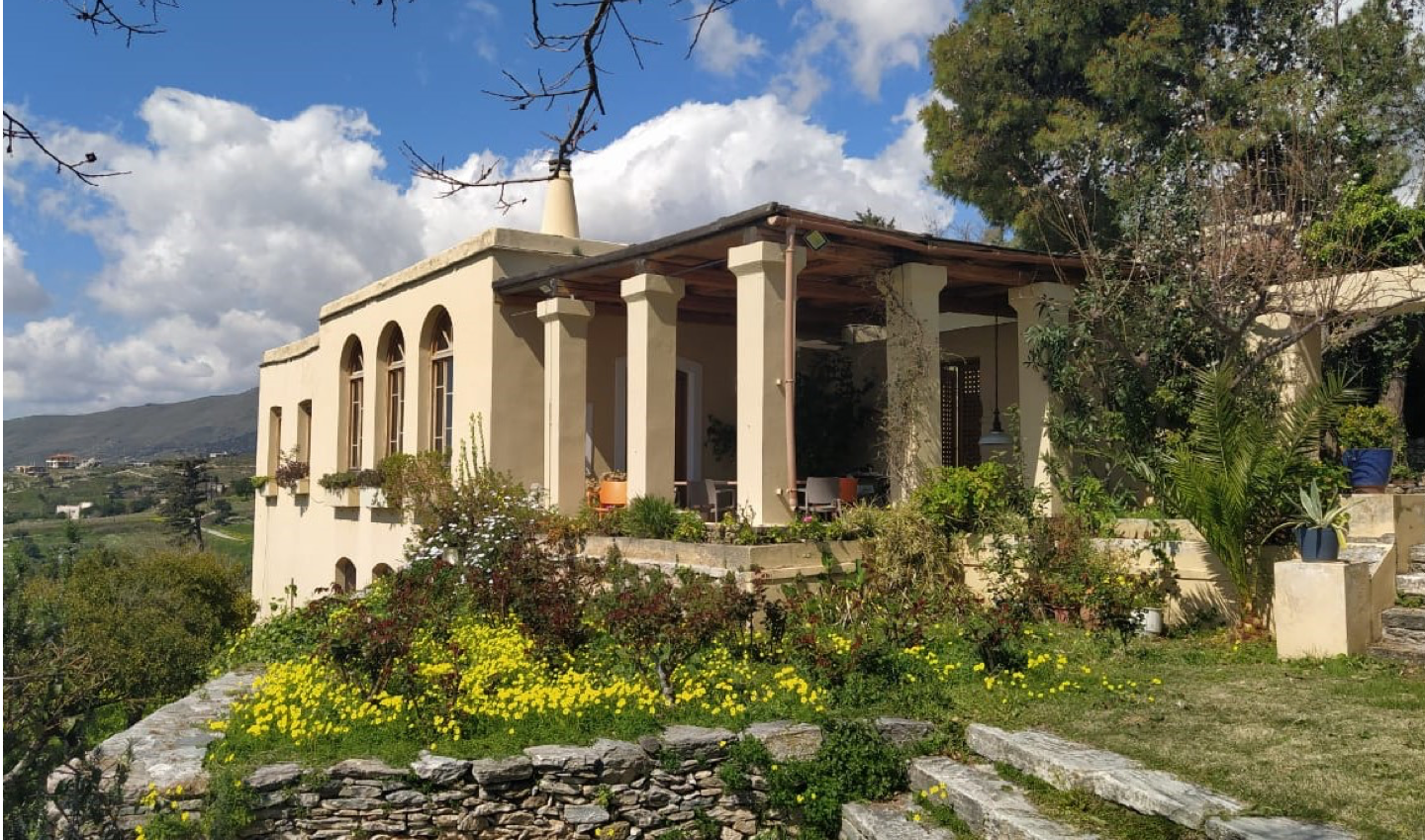Timelessness
You can still see today in the estate signs of timelessness, such as, monumental ruins of great activity and columns from the local green marble (Marmor Carystium or Cipollino Verde). Also, building materials of ancient buildings and column vertebrae of chipped limestone. In many constructions, the Karystian slate has been used, a material that is still excavated today from the many quarries of the area.
Archaeological excavations have revealed the remaining parts of ancient residential complexes, among them, what archaeologists presume to be the residence of the Byzantine bishop of the region.
Timelessness
You can still see today in the estate signs of timelessness, such as, monumental ruins of great activity and columns from the local green marble (Marmor Carystium or Cipollino Verde). Also, building materials of ancient buildings and column vertebrae of chipped limestone. In many constructions, the Karystian slate has been used, a material that is still excavated today from the many quarries of the area.
Archaeological excavations have revealed the remaining parts of ancient residential complexes, among them, what archaeologists presume to be the residence of the Byzantine bishop of the region.


Building material helps us understand timelessness in a superb manner
People used the existing material in different times covering new buildings’ needs. A typical example of this practice is the impressive staircase running through the estate; it is built in its larger part out of architectural members of ancient buildings. One can still distinguish the serrated surface of the cobblestones and the pegs (notches) in the rock that were created to receive the metal joint that unites the architectural members and makes the construction stronger. This staircase, which crosses the estate from south to north and consists of 157 steps, was created to serve the needs of the estate when it was graded on terraces.
Underlying all the above is the spirit of the people who have worked the land of the estate from Early Antiquity. This spirit is omnipresent today
Building material helps us understand timelessness in a superb manner
People used the existing material in different times covering new buildings’ needs. A typical example of this practice is the impressive staircase running through the estate; it is built in its larger part out of architectural members of ancient buildings. One can still distinguish the serrated surface of the cobblestones and the pegs (notches) in the rock that were created to receive the metal joint that unites the architectural members and makes the construction stronger. This staircase, which crosses the estate from south to north and consists of 157 steps, was created to serve the needs of the estate when it was graded on terraces.
Underlying all the above is the spirit of the people who have worked the land of the estate from Early Antiquity. This spirit is omnipresent today
Building material helps us understand timelessness in a superb manner
The parts known to experts as spolia are the already existing material people used in different times in order to cover the needs of their new constructions. A typical example of this practice is the impressive staircase running through the estate; it is built in its larger part out of architectural members of ancient buildings. You can still distinguish the serrated surface of the cobblestones and the pegs (notches) in the rock that were created to receive the metal joint that unites the architectural members and makes the construction stronger. This staircase crosses the estate from south to north and consists of 157 steps.
The spirit of the people who worked on the land throughout time is omnipresent to this day!


